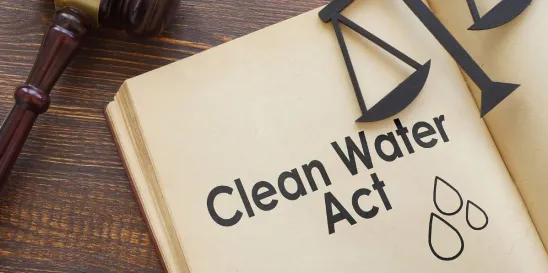On 14 September 2023, the US Environmental Protection Agency (EPA) announced the release of the final Clean Water Act (CWA) Section 401 Water Quality Certification Improvement Rule (the Rule).1 The Rule restores regulatory authority to states and tribes to review pipelines, dams, and other federally regulated infrastructure projects within their borders, which the Trump administration previously curtailed by rule in 2020 (the 2020 Rule).
Under CWA Section 401, federal agencies may not issue licenses or permits for activities that may result in a discharge into a water of the United States unless the certifying authority (typically the state or authorized tribe where the discharge originates) certifies that the discharge is consistent with water quality requirements. If a certifying authority fails or refuses to act on a request for certification in a reasonable period of time, the certification requirements are waived with respect to the federal license or permit application. Certifying authorities may also impose certain conditions upon federal permits or licenses—such as effluent limitations or monitoring requirements—as a prerequisite to granting certification. Some of the major projects subject to Section 401 include energy and large infrastructure projects such as interstate gas pipeline projects that require EPA-issued CWA Section 402 National Pollutant Discharge Elimination System permits, CWA Section 404 permits issued by the US Army Corps of Engineers, and licenses issued by the Federal Energy Regulatory Committee.
EPA announced the signing of the Rule proposal on 2 June 2022.2 The Rule, which will take effect this November, will have the following key impacts:
- Prefiling meeting requests. The Rule provides certifying authorities with the opportunity to receive early notification and to engage with project proponents and federal agencies before the statutory time frame for review begins.
- Request for certification package. Under the Rule, a request for certification must include a copy of the license or permit application—or a copy of the draft license or permit for general licenses and permits—and any “readily available water-quality related materials that informed the development of the application.” In addition, there is a default list of seven components3 that must be included in the certification request.
- Reasonable period of time. The Rule sets a default “reasonable period of time” to act on a request for certification of six months from the time a certifying authority receives the request; however, federal agencies and certifying authorities can agree to extend that period to full year.
- Expanding the scope of review for Section 401 water quality certifications. The Rule restores certifying authorities’ ability to evaluate whether the “activity as a whole will comply with all applicable water quality requirements,” rather than merely the discharge.
- Clarifying the federal government’s scope of review. The Rule limits federal agency reviews to “whether the appropriate certifying authority issued the certification decision; the certifying authority confirmed it complied with its public notice procedures established pursuant to CWA Section 401(a)(1); and the certifying authority acted on the request for certification within the reasonable period of time.”
Overall, the Rule vests states and authorized tribes with substantially more authority and discretion on federal projects than under the 2020 Rule, creating a source of uncertainty for the regulated community in anticipating permit conditions and requirements, particularly where multiple jurisdictions are involved. However, even with the Rule, fewer projects will likely be reviewed under the Section 401 program than in the past, given the US Supreme Court’s ruling earlier this year in Sackett v. EPA,4 which substantially narrowed the scope of federal jurisdiction under the CWA.






 />i
/>i
